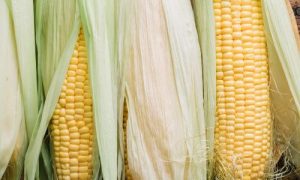In Punjab, wheat farmers brace for fungal infection

In the ongoing Rabi season, Punjab’s wheat acreage has decreased slightly to 34.75 lakh hectares from 34.90 lakh hectares in 2023. Initial crop damage occurred due to pink stem borer attacks, leading many farmers to replant. The state is also warning about yellow rust fungal infection. The agriculture department is educating farmers on combating this threat and addressing nutrient deficiencies in wheat crops.
Chandigarh: For the ongoing Rabi season, the area under wheat recorded a marginal dip at 34.75 lakh hectares compared to 34.90 lakh hectares in 2023 and 35.26 lakh hectares the year before that. After the wheat crop faced initial hiccups due to attacks by pink stem borers in November last year, many Punjab farmers ploughed back their fields. They are now being warned about the potential threat of yellow rust fungal infection.Even though the state food and supplies department is yet to fix the targeted wheat procurement, it usually follows the formula of a 5% increase over the previous season’s purchase, which was 120 lakh metric tonnes (LMT) last year.In November, soon after sowing, the wheat crop was damaged in several areas due to attack by the pink stem borer. According to experts, delay in temperature drop at the start of winter made the weather conditions favourable for the pest attack.Buta Singh, a farmer from Khosa Randhir village in Moga, said the wheat crop was damaged due to the pink stem borers, and many farmers in his village ploughed back the damaged wheat. “However, it is unlikely to result in any delay in harvesting as during the peak of summer the entire crop will ripen at a fast pace, including the wheat sown again. The weather conditions were unstable at the start of the wheat season,” he said.
However, with the drop in temperature over the last week, the impact of pink stem borer has considerably lessened.Meanwhile, the state agriculture department has launched a campaign to make farmers aware of the potential threat of yellow rust fungal infection on the crop, and field inspections are being carried out. Yellow rust, also known as stripe rust, typically appears between mid-December and early January, thriving in cold and humid weather. The disease can persist till the end of March, spreading widely under favourable conditions.Agriculture expert Jaswinder Singh Brar said the wheat growers should presently focus on the spray of nutrients on the crop, including manganese. “It is an essential micronutrient that plays a key role in photosynthesis, resulting in increased yield of grain and straw in the wheat crop. Symptoms of manganese deficiency appear on the middle leaves with light greyish-yellow to pinkish-brown. To rectify manganese deficiency, farmers should give one spray of 0.5 percent manganese sulphate solution, which means spraying one kilogram of manganese sulphate in 200 litres of water per acre,” he said.
To read more about Wheat News continue reading Agriinsite.com
Source : The Times Of India

















